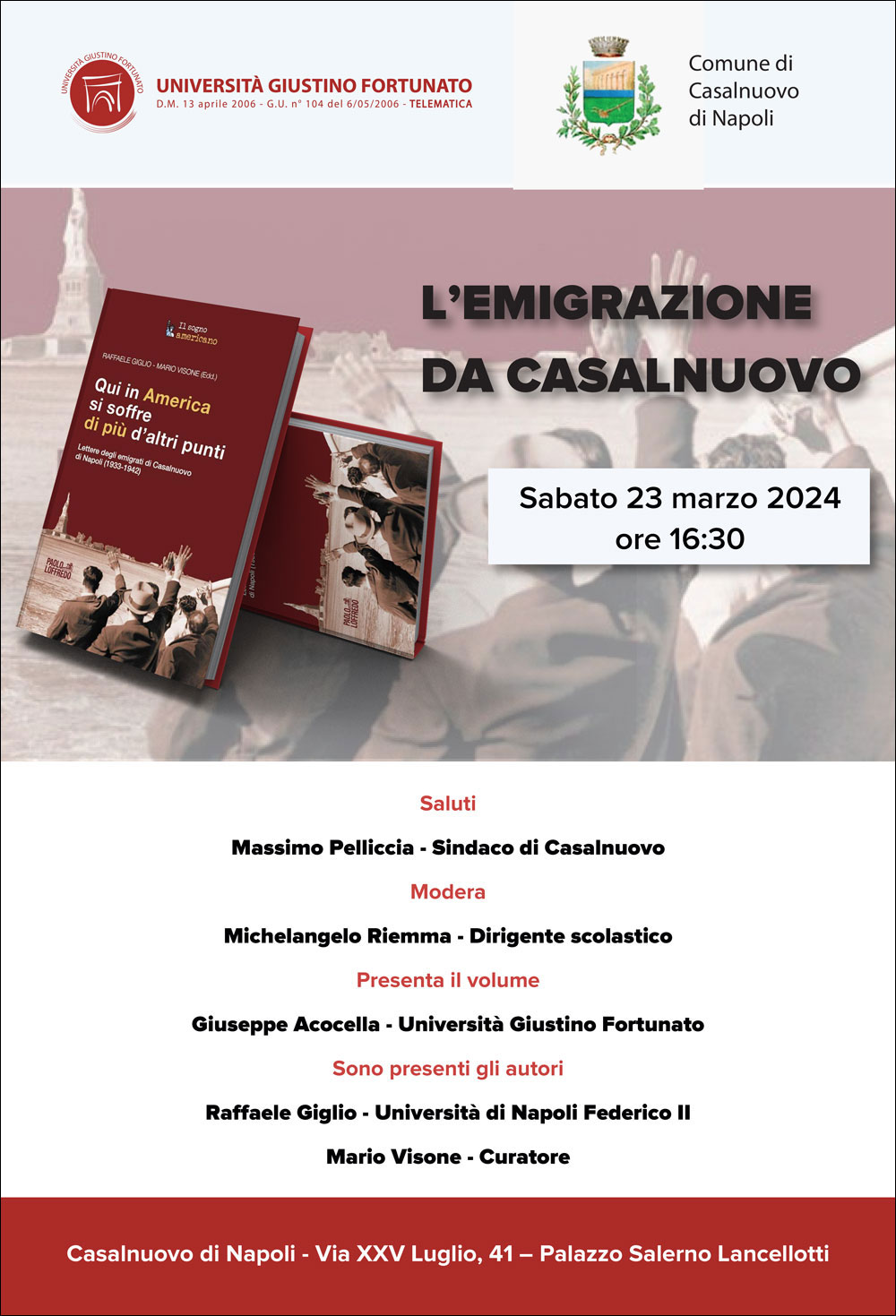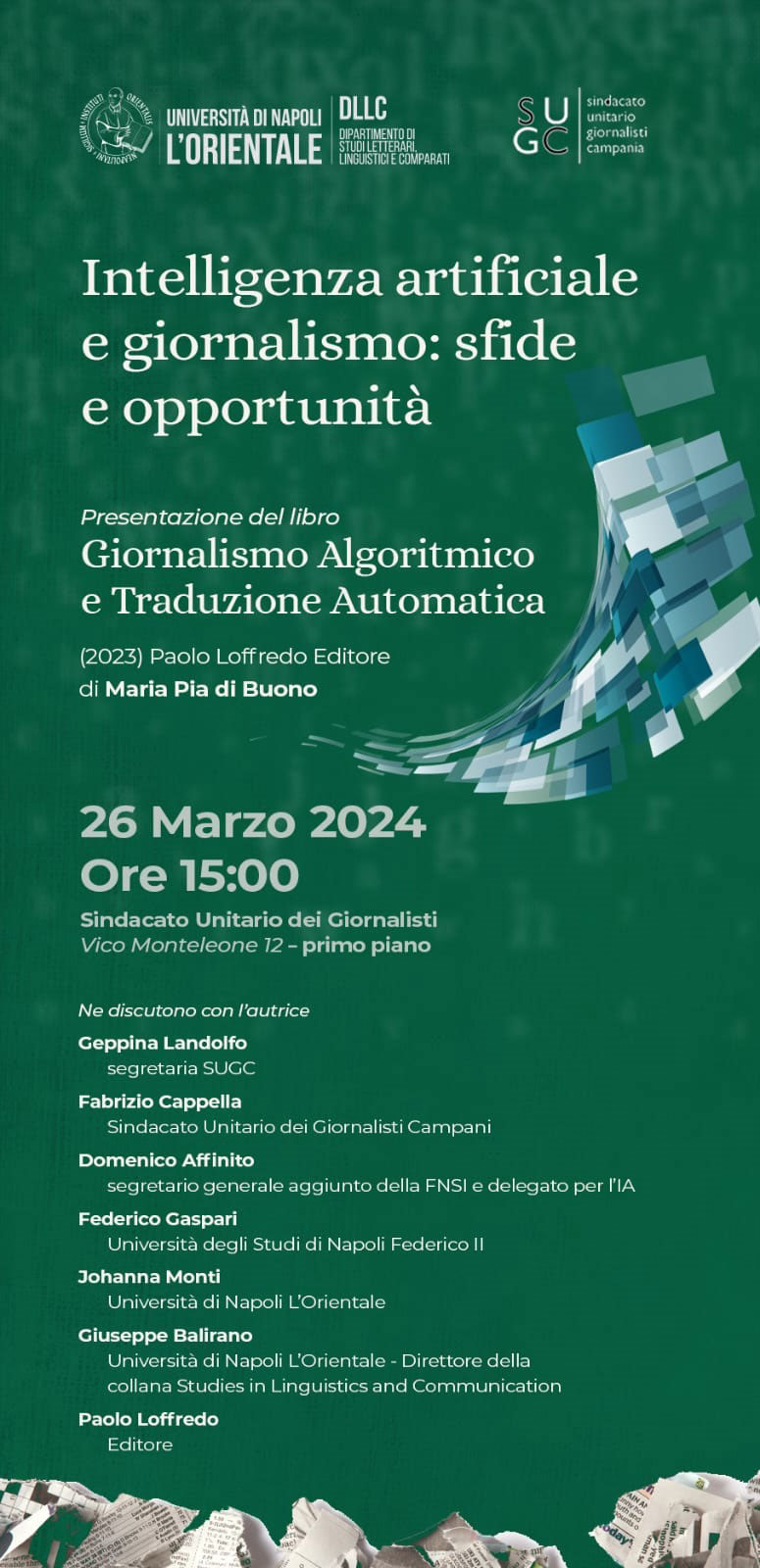 Paolo Loffredo, sixth generation of a large family of publishers and booksellers engaged in the production and distribution of books since the late nineteenth century, creates in 2012 the new editorial company Paolo Loffredo Editore. The historical site was until the '80s in the heart of the historic centre of Naples in Via San Biagio dei Librai, lower Decumano and also known as the SpaccaNapoli.
Paolo Loffredo, sixth generation of a large family of publishers and booksellers engaged in the production and distribution of books since the late nineteenth century, creates in 2012 the new editorial company Paolo Loffredo Editore. The historical site was until the '80s in the heart of the historic centre of Naples in Via San Biagio dei Librai, lower Decumano and also known as the SpaccaNapoli.
At the beginning of the twentieth century, Giuseppe Loffredo decided to add book selling to the book production, which definitively imposed itself after World War II with the publication of manuals for the University and for the School that succeeded in establishing themselves soon throughout Italy.
LAST EVENT
"L'emigrazione da Casalnuovo"
23 Marzo 2024 - Palazzo Salerno Lancellotti Ateneo, via XXV Luglio, 41 - Casalnuovo (NA) - ore 16,30

--------------------------------------------------------------------
"Intelligenza artificiale e giornalismo: sfide e opportunità"
26 Marzo 2024 - Sindacato Unitario dei Giornalisti - vico Monteleone, 12 - primo Piano - Napoli - ore 15,00

El animal no humano en la narrativa contemporánea europea
ISSN:
Language: italiano, francese, spagnolo, inglese
Publisher: Paolo Loffredo Editore Srl

Description
El animal no humano en la narrativa contemporánea europea
edited by
Claudia Alonso-Recarte, Ignacio Ramos-Gay e Irene Romera Pintor Universitat de València
Biotechnological progress, the growing public awareness of ecological and environmental problems, or even critical paradigms’ dissolution of the anthropocentrism once rooted in the Renaissance and the questioning of the category of species underlie the real or symbolic presence of nonhuman animals in contemporary art. Such presence precipitates discussions at both a theoretical and a creative level that, far from merely suggesting an emergence of academic interest, have consolidated themselves as matters of serious scholarly dedication. The wide array of mediums that have integrated the nonhuman animal range from the most classical audiovisual forms – film, television, the circus, the theatre, dance, museum exhibits, videogames, or music – to other popular activities and sports (and the spaces in which these are carried out) that capitalize on the animal-as-body and the animal-as-visual-object, and which include hunting, aquaria, zoos, bio- and eco-parks, cuisine, shows exhibiting breed standards of domestic animals, competitions (horseback riding, rodeos, races), taxidermy, safaris, and even the staging of animal sacrifices. These highly theatricalized shows ignite environmental, ethical, economic, political and/or legal concerns, along with aesthetic, philosophical and cultural issues at stake, which goes to show the extent to which the nonhuman animals’ place in contemporary art demands interdisciplinary approaches that may answer to the question of what we make of them – not only as objects of creation, but also as subjects actively engaged with humans, something which has been vindicated by different aestheticpractices. .The irruption of the field of Animal Studies towards the end of the 1990s led to an impressive surge of academic output (mostly in Britain and America) eager to reexamine the cultural presence of nonhuman animals…..
Bien por los más recientes avances en biotecnología, bien porque la conciencia ecológica y medioambiental ocupa un creciente espacio en el debate público actual, o porque los paradigmas críticos tienden progresivamente a la disolución del antropocentrismo renacentista y a la emulsión de los límites entre especies, la presencia real o simbólica de los animales no humanos en las artes contemporáneas constituye un motivo de reflexión tanto teórica como creativa que dista mucho de ser un simple campo emergente para erguirse, en la actualidad, en tanto que terreno académico consolidado. Los diferentes soportes creativos que han precipitado su afianzamiento abarcan plataformas audiovisuales más clásicas – el cine, la televisión, el circo, el teatro, la danza, la exposición museística, los videojuegos, o la música – así como otras prácticas populares y deportivas (y los espacios que las acogen) que se nutren del capital derivado del animal como cuerpo y objeto visual, como son la caza, los acuarios, los zoológicos y bio- y eco-parques, la cocina, las exhibiciones de estándares de razas de animales domésticos, las competiciones (hípica, rodeos, carreras), la taxidermia, los safaris, e incluso las escenificaciones de sacrificio animal. Que este tipo de espectáculos altamente teatralizados aúnen cuestionamientos medioambientales, éticos, económicos, políticos y/o jurídicos, con otros de índole tanto estética cuanto filosófica o cultural, motiva un acercamiento interdisciplinar a la cuestión del animal no humano en la creación artística contemporánea, y una revisión de su presencia no sólo como objeto de creación sino, incluso, como agente activo en su interacción con el humano, reivindicado como tal por las diferentes prácticas artísticas. La irrupción de los Animal Studies, a finales de la década de 1990, ha dado lugar a una ingente producción académica esencialmente de origen anglosajón centrada en la presencia de animales, no humanos, en la cultura…..













